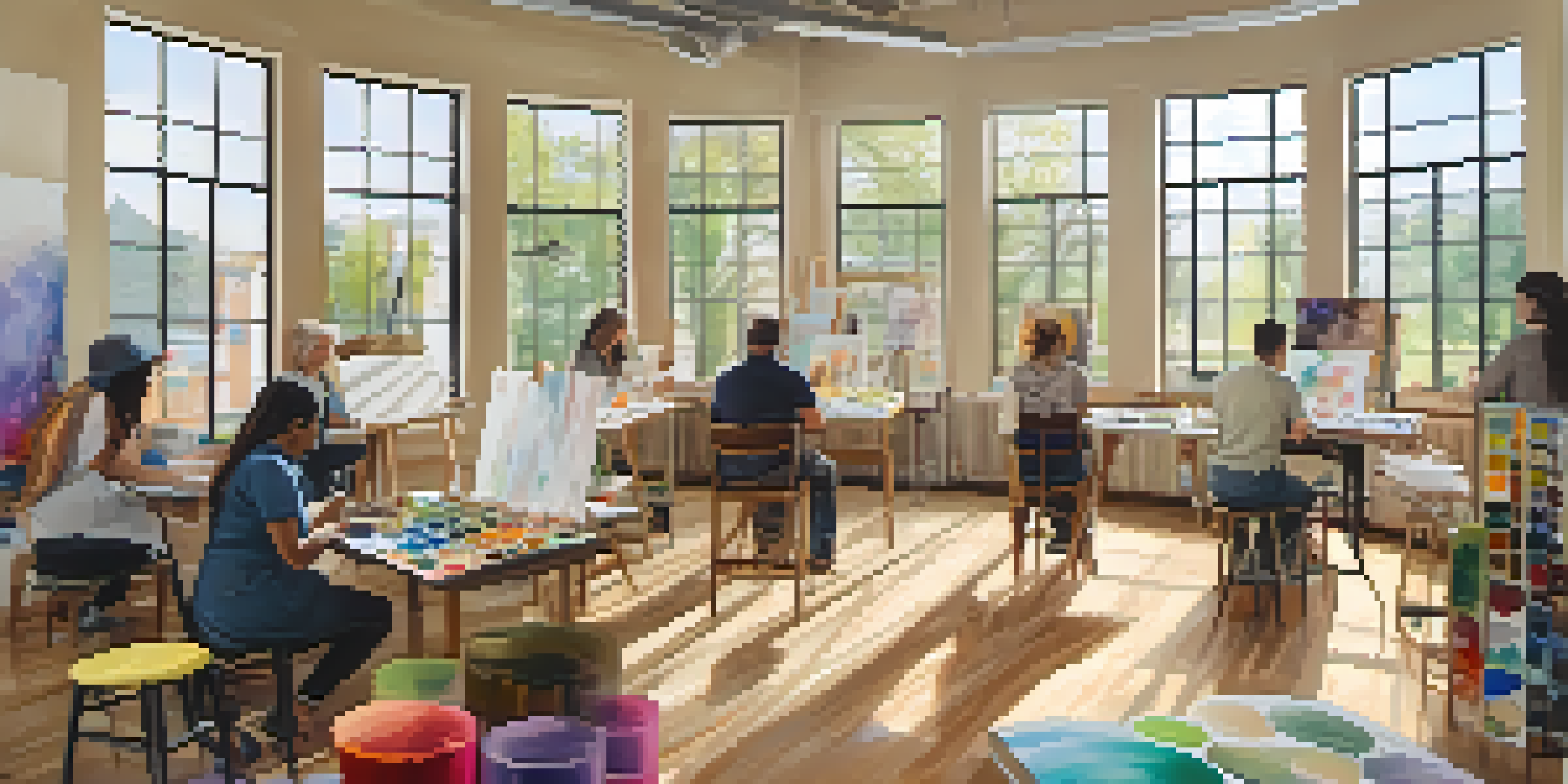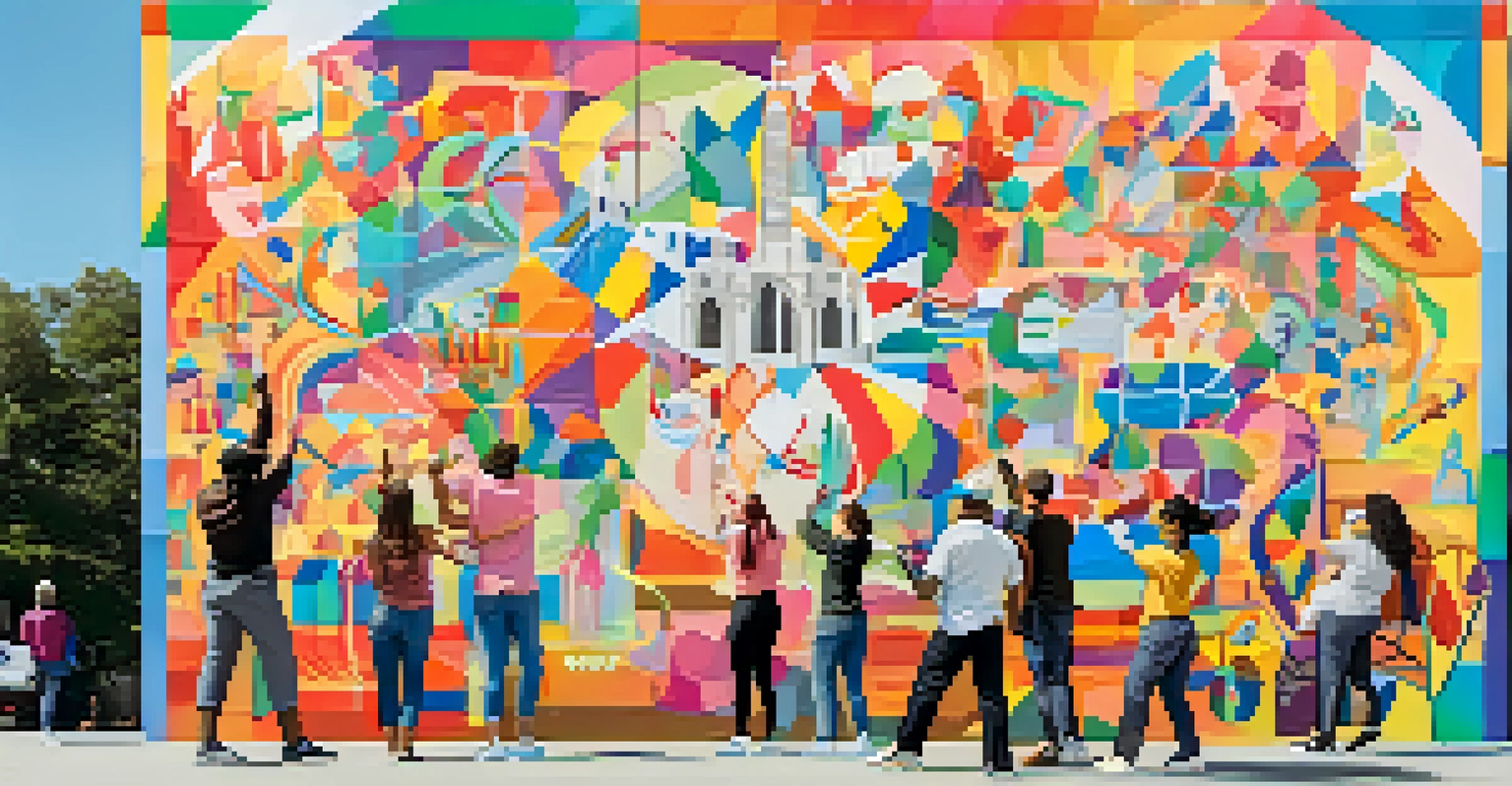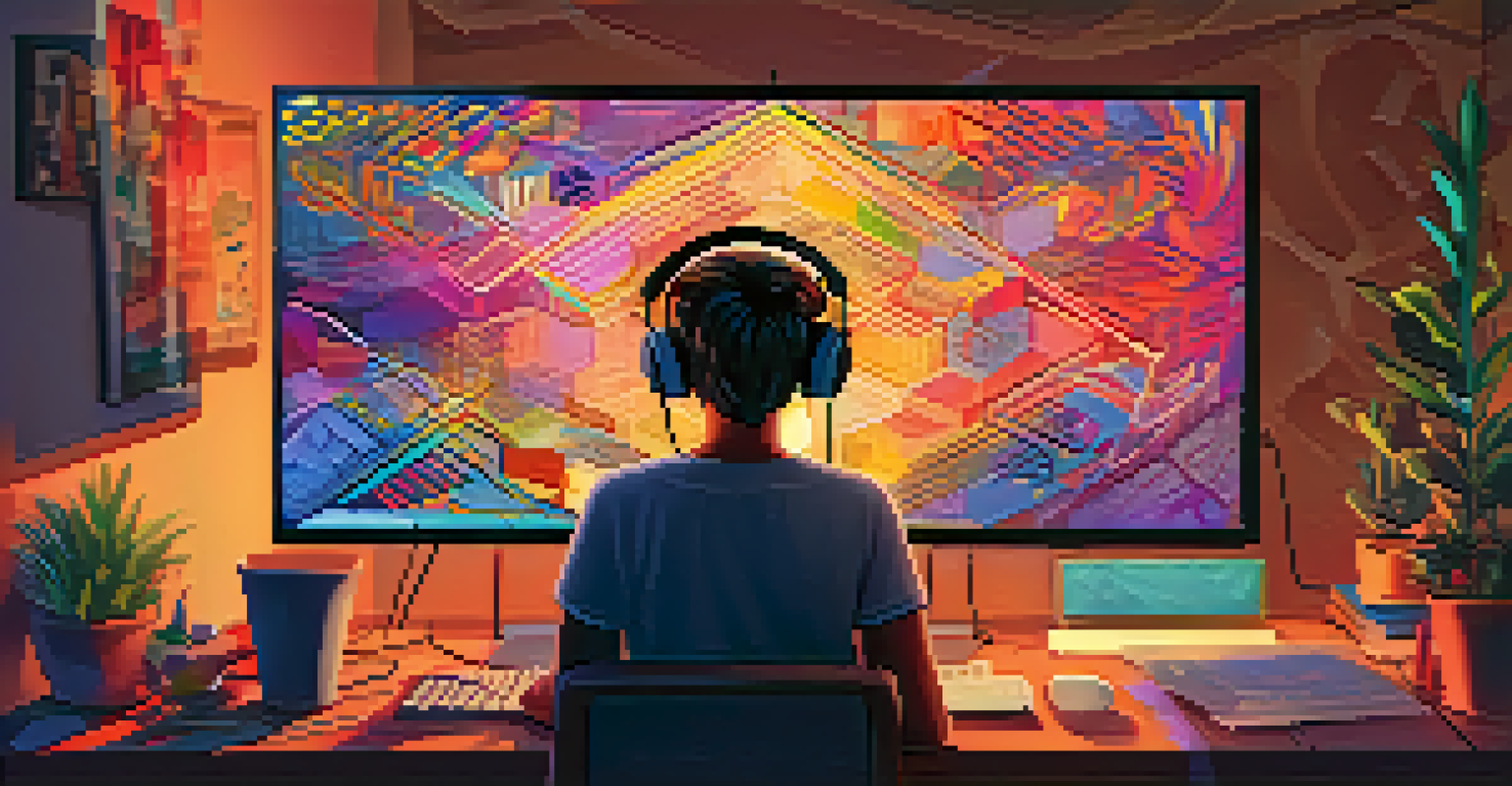Art and Mental Health: A Contemporary Perspective

Understanding the Therapeutic Value of Art
Art has long been acknowledged for its therapeutic benefits. Through painting, drawing, or writing, individuals can express emotions that they might struggle to articulate in words. This creative outlet serves as a powerful tool for healing, providing a safe space to explore complex feelings.
Art is not what you see, but what you make others see.
Many therapists now incorporate art into their practices, recognizing its capacity to foster emotional release and self-discovery. For instance, a patient might find solace in splashing colors on a canvas, allowing them to process grief or anxiety. This process often leads to breakthroughs that traditional talk therapy might not achieve.
Related Resource
Moreover, engaging in art can enhance mindfulness, drawing individuals into the present moment. This focus helps alleviate symptoms of stress and depression, as participants become absorbed in their creative process, momentarily escaping from their worries.
Art as a Means of Self-Expression
For many, art is a personal language, allowing them to convey thoughts and feelings that words cannot encapsulate. This uniqueness gives individuals a sense of identity and purpose, often playing a crucial role in their mental health journey. The act of creating something meaningful can foster a sense of accomplishment and pride.

Consider the story of an artist who uses their canvas to depict their struggles with anxiety. By illustrating their internal battles, they not only find relief but also create a connection with others experiencing similar challenges. This shared understanding can be incredibly validating and comforting.
Art as a Healing Tool
Art serves as a powerful medium for emotional expression and healing, enabling individuals to process complex feelings.
Art can also serve as a mirror, reflecting our inner world back to us. This reflection can lead to greater self-awareness, helping individuals identify patterns in their emotions and behaviors that they may want to change.
Community and Connection Through Art
Participating in art projects or classes can foster a sense of community, which is vital for mental well-being. When individuals come together to create, they share experiences and form bonds that can relieve feelings of isolation. This communal aspect of art can be especially healing for those battling mental health issues.
Every artist dips his brush in his own soul, and paints his own nature into his pictures.
Art workshops often create a welcoming environment where participants feel supported and encouraged. This camaraderie not only enhances creativity but also nurtures friendships that can last beyond the class or project. Through shared experiences, participants can uplift one another.
Related Resource
Additionally, community art initiatives often aim to break down stigmas surrounding mental health. By showcasing the artwork of individuals facing mental health challenges, these initiatives invite dialogue, fostering understanding and empathy within the larger community.
The Role of Digital Art in Mental Health
In today's digital age, art has taken on new forms, providing innovative avenues for expression and connection. Digital art platforms allow individuals to create and share their work with a global audience, which can be incredibly empowering. This accessibility can help those who may not have traditional art supplies or training.
Social media, in particular, has become a space where artists share their mental health journeys alongside their artwork. Many find solace in receiving support from online communities, where connections can blossom through shared experiences. This virtual support network can be a lifeline for those feeling alone.
Community Connection Through Art
Participating in art projects fosters a sense of community, helping to alleviate feelings of isolation and promote mental well-being.
Moreover, digital art can facilitate new therapeutic practices, such as art therapy apps. These tools can offer guided exercises, enabling users to engage in self-exploration and creativity at their own pace, making art more accessible than ever.
Art Therapy: Professional Approaches to Healing
Art therapy is a specialized field that combines psychology and artistic expression. Certified art therapists guide individuals through the creative process, helping them navigate their emotions and experiences in a supportive environment. This professional approach ensures that participants gain maximum benefit from their artistic endeavors.
Through structured activities, art therapists can assist clients in exploring specific themes or issues, whether it's trauma, anxiety, or self-esteem. For example, clients might be asked to create a visual representation of their emotions, which can lead to insightful discussions about their experiences.
Related Resource
The beauty of art therapy lies in its adaptability; it can cater to people of all ages and backgrounds. Whether through clay modeling, painting, or collage-making, the focus remains on personal expression and healing, making it an inclusive form of therapy.
The Impact of Public Art on Mental Well-Being
Public art installations have the power to transform spaces and uplift communities. Murals, sculptures, and art in public places can evoke feelings of joy and inspiration, contributing positively to mental health on a larger scale. These visual expressions can create a sense of belonging and pride within neighborhoods.
Moreover, public art often addresses social issues, including mental health, thereby raising awareness and encouraging conversations. When people encounter art that speaks to their struggles, it can foster a sense of connection and validation, reminding them they are not alone in their experiences.
Digital Art's Expanding Role
Digital art platforms empower individuals to share their creative journeys, providing connection and support in today's online environment.
Communities that embrace public art often report higher levels of engagement and cohesion among residents. This shared ownership of art further enhances mental well-being, as individuals feel more connected to their surroundings and each other.
Future Directions: Art and Mental Health Research
As we continue to explore the connection between art and mental health, research in this field is gaining momentum. Studies are increasingly examining how different forms of art can influence emotional well-being and cognitive function. This growing body of evidence is essential for integrating art into mental health practices.
Future research may delve deeper into specific art modalities, such as music, dance, or drama, and their therapeutic effects. By understanding the unique benefits each form offers, mental health professionals can tailor their approaches to better meet individual needs.

Ultimately, the ongoing exploration of art's role in mental health will pave the way for innovative therapeutic practices and programs. As we recognize the profound impact of creativity on well-being, we can create more inclusive and supportive environments for everyone.